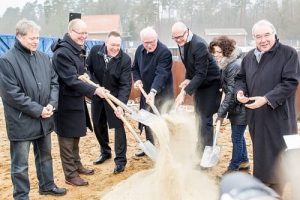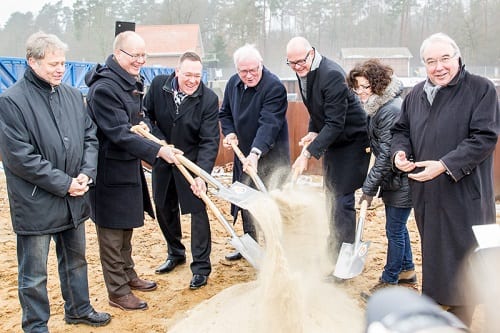In cooperation with the Technical University of Braunschweig, Salzgitter AG is building a research hydropower plant in the district of Celle, in Lower Saxony, Germany. Its completion is scheduled for 2017.

Ground-breaking ceremony during the opening of the construction site. Source: Salzgitter AG
The project is aimed at proving the technical feasibility of a hydropower technology that is unique in the world in its capability of harnessing hydropower potential formerly not technically and economically usable in the case of large heads and high flow rates. During the project, special consideration will be given to the ecological conditions existing in the pastureland natural reserve, as well as to permitting the passage of fish.
The 500 kW high-performance steel water wheel employed in the power plant has an intake capacity of 60 m³/s, which is ten times that of conventional waterwheels. A wide array of the structural and mechanical engineering components are to be used partly from products both new and further developed in the Salzgitter AG portfolio. These products are to be sourced from today’s product range that includes components, plate, tubes and pipes, as well as rolled sections.
TU Braunschweig obtained planning approval for the construction and operation of the plant back in 2010, as well as the relevant authorization for water management from Lüneburg-based Lower Saxony Water Management, Coastal Defense and Nature Conservation Agency. Activities will be focused on investigations conducted as part of short-, medium-and long-term research on technical, mechanical and ecological issues.
If the desired technical realization of university research is successfully upscaled for industrial use, introducing a CO2-free key technology suitable for meeting base load requirements and capable of stabilizing the grid in the renewable energies domain will be possible in the long term in Germany.
The anticipated annual production of electricity generated by the research hydropower plant amounts to 2 500 000 kWh, sufficient to supply 1000 three-person households in the environs with green electricity and equivalent to CO2 savings of 2500 t CO2 a year compared with coal-fired power.

















